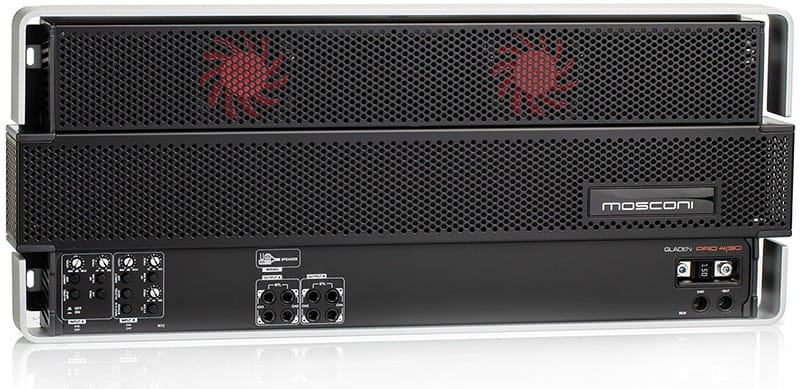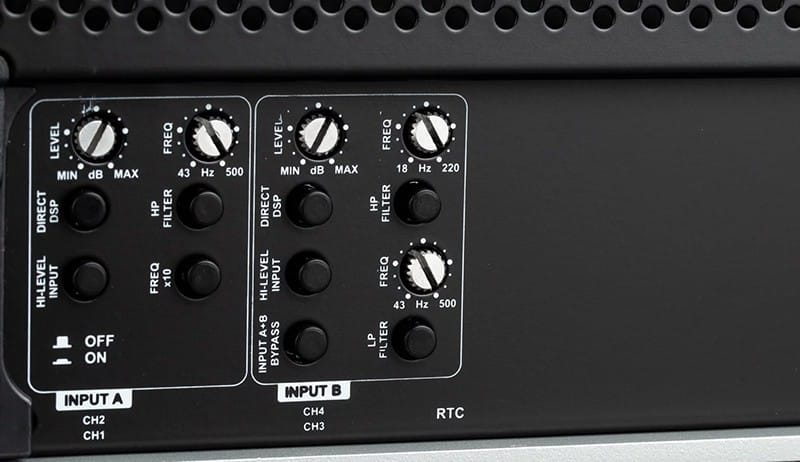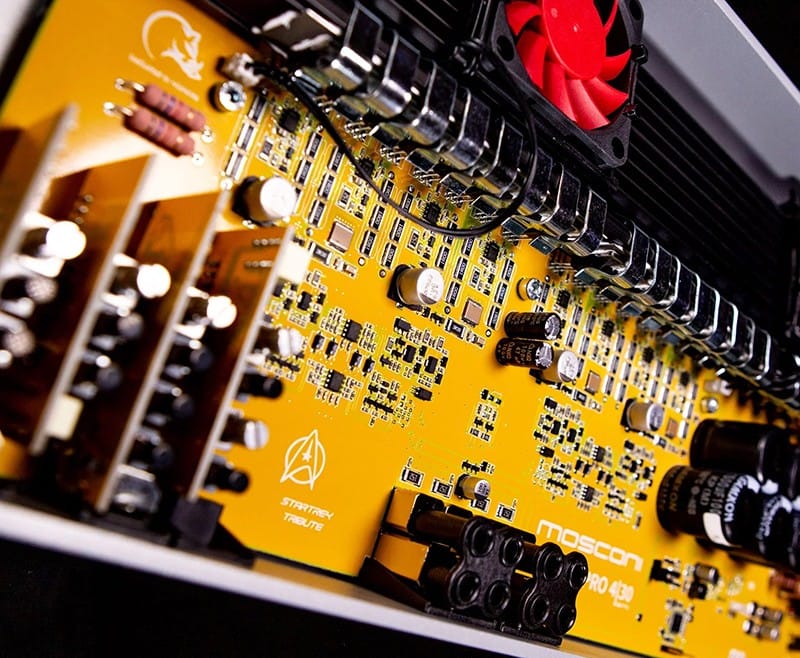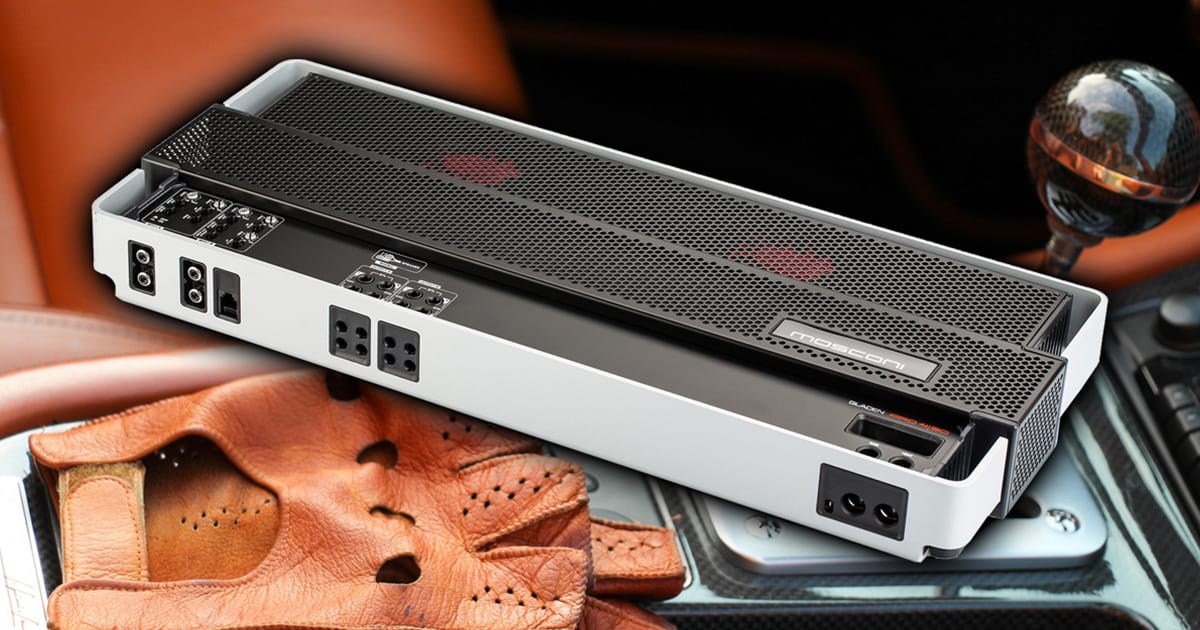There are hundreds, if not thousands, of different options available when picking an amplifier for your car audio system. Some amplifiers focus on offering a diminutive footprint to simplify installation but sacrifice thermal stability. Others concentrate on producing prodigious amounts of power at the expense of audio signal purity. Mosconi’s Pro series amplifiers were designed to be reliable and sound great. Let’s look at the Pro 4|30 four-channel amp in this Product Spotlight.
Mosconi Pro 4|30 Specifications
As mentioned, the Mosconi Pro 4|30 is a four-channel amp that’s rated to produce 170 watts of power per channel when driving four-ohm loads. Output power increases to 225 watts per channel with two-ohm loads. Each pair of stereo channels can be bridged to drive a single four-ohm load and provide it with 450 watts of power. Mosconi states that the amp has a signal-to-noise ratio of -83 dBA, referencing one watt of power.
The amplifier chassis measures a robust 500 by 205 by 55 millimeters, or 19.7 inches long, 8.07 inches wide and 2.18 inches tall. The chassis design is unique in that the front and rear halves of the amp are wrapped in vertical aluminum plates. The rear third of the amp is mostly a finned heatsink with two cooling fans mounted on top. The center and bottom thirds of the amp conceal the circuit board.

Amplifier Connections and Features
All the power, signal, and speaker connections are made along the front edge of the amp using integrated terminal blocks. The hex-head set screws for the connections are accessible through openings in the top panel. An easily replaceable 150-amp mini-ANL fuse accessible from the top protects the amp from wiring mishaps.
The four sets of speaker connections are just to the left of the center of the chassis. Once again, terminal blocks with set screws accessible from the top of the amp ensure a reliable connection. Installers should pay close attention to the polarity labels, as the adjacent channels are inverted when viewed left to right.
Finally, on the left side of the amp, we find the input for the optional RTC remote level control and two sets of RCA input jacks.

Audio Processing Options
While the Pro 4|30 may look simple at first glance, it’s got all the features your installer will need to extract excellent performance from your speakers. The settings for Input A and Input B are once again accessible from the top panel and located at the amp’s far left end. The amp can accept audio signals from 350 millivolts up to 12 volts. The amp has a button that enables the high-level input range. When the high-level input is activated, the amp monitors the input for the presence of the BTL offset voltage and activates the amp automatically when detected. A Direct DSP (DDSP) button bypasses much of the audio processing for those instances when using a digital signal processor and locks the input sensitivity to 5.3 volts.
Concerning crossovers, Input A has a -12 dB/Octave high-pass filter that can be set between 43 and 500 hertz, or 430 Hz to 4 kHz when the x10 multiplier button is depressed. Input B has a high-pass crossover that’s adjustable from 18 to 220Hz and a low-pass crossover adjustable from 43 to 500 Hz. It would be nice if the Input B low-pass crossover had an x10 button. That said, most installations with this amp will include a digital signal processor.

High-Bias Operation
If you’d read our articles on amplifier distortion, you’ll know that crossover distortion in Class-AB designs can, when not designed or calibrated properly at the factory, result in sound quality issues, especially at low volume levels. Mosconi’s taken a novel approach to maximizing sound quality by configuring the amp to operate in what they call AAB mode. The output devices are biased to operate in full Class-A mode up to 30 watts of power. Class-A operation eliminates the crossover distortion issue. However, this operation mode means the amp will turn the output devices on halfway when no signal is played. This increases current consumption, so the amp will get quite warm. When running this beauty, you’ll want to ensure your vehicle has a robust electrical system.
Once the output level exceeds 30 watts per channel, the amp reverts to conventional, though still sonically excellent, Class-AB mode. In short, you should experience impressive clarity at low volume levels and still be able to crank things when the mood requires. Very cool!

High-Quality Car Audio Amplification
Though a handful of sound-quality-focused amplifiers are still on the market, they are becoming rarer. You can find smaller, more efficient amplifiers to power your car audio system. However, we suggest formally auditioning the unique Mosconi Pro 4|30. It would be well worth the time investment if you plan on installing a truly high-end audio system in your vehicle. You can find an authorized Mosconi dealer near you using the Find a Dealer tool on the Mosconi America website.
Be sure to follow Mosconi on Facebook and YouTube to learn more about their amazing car audio products.

